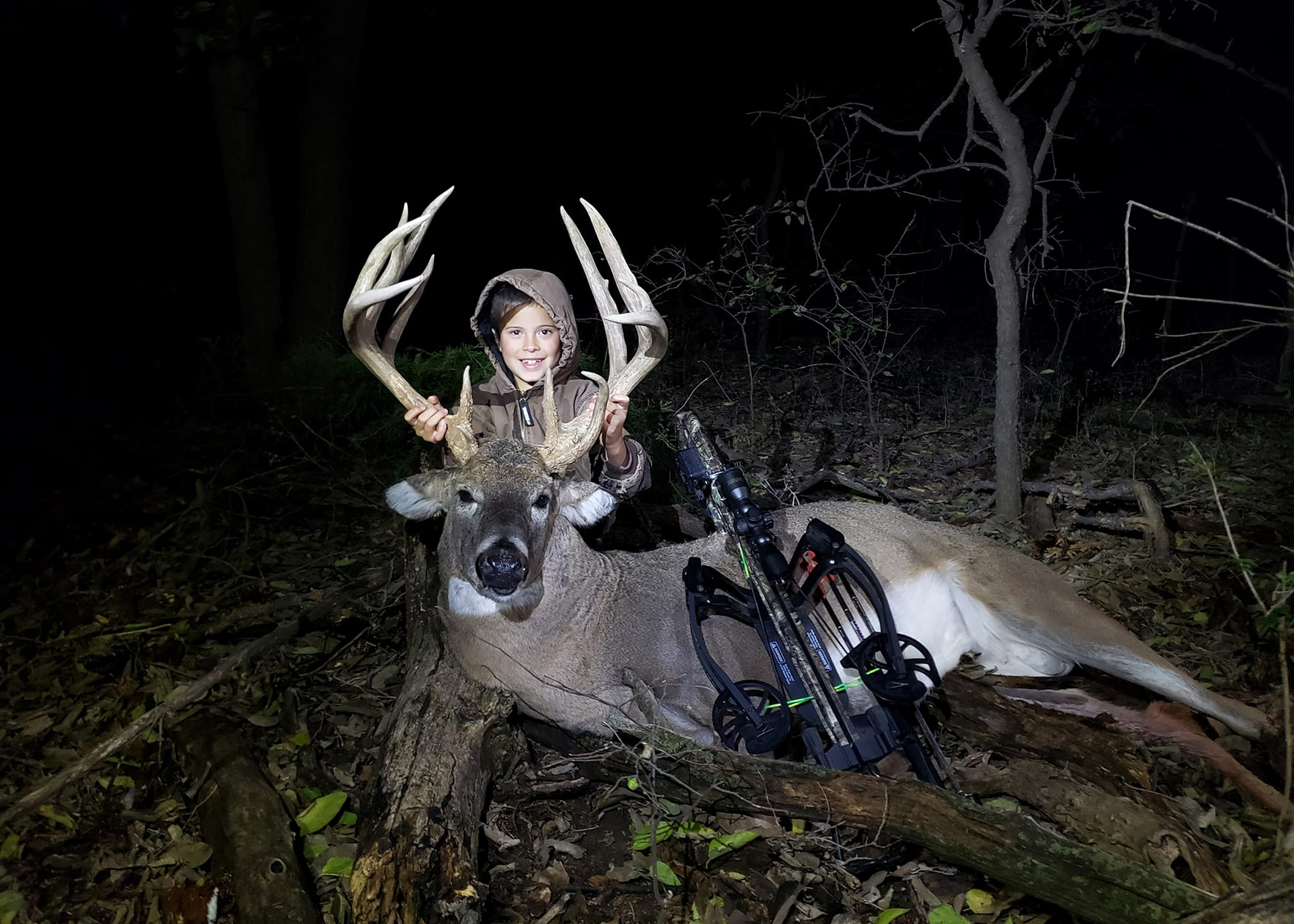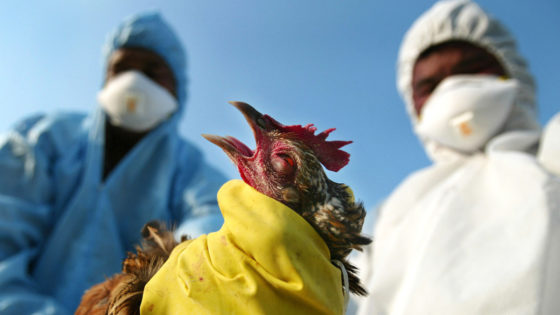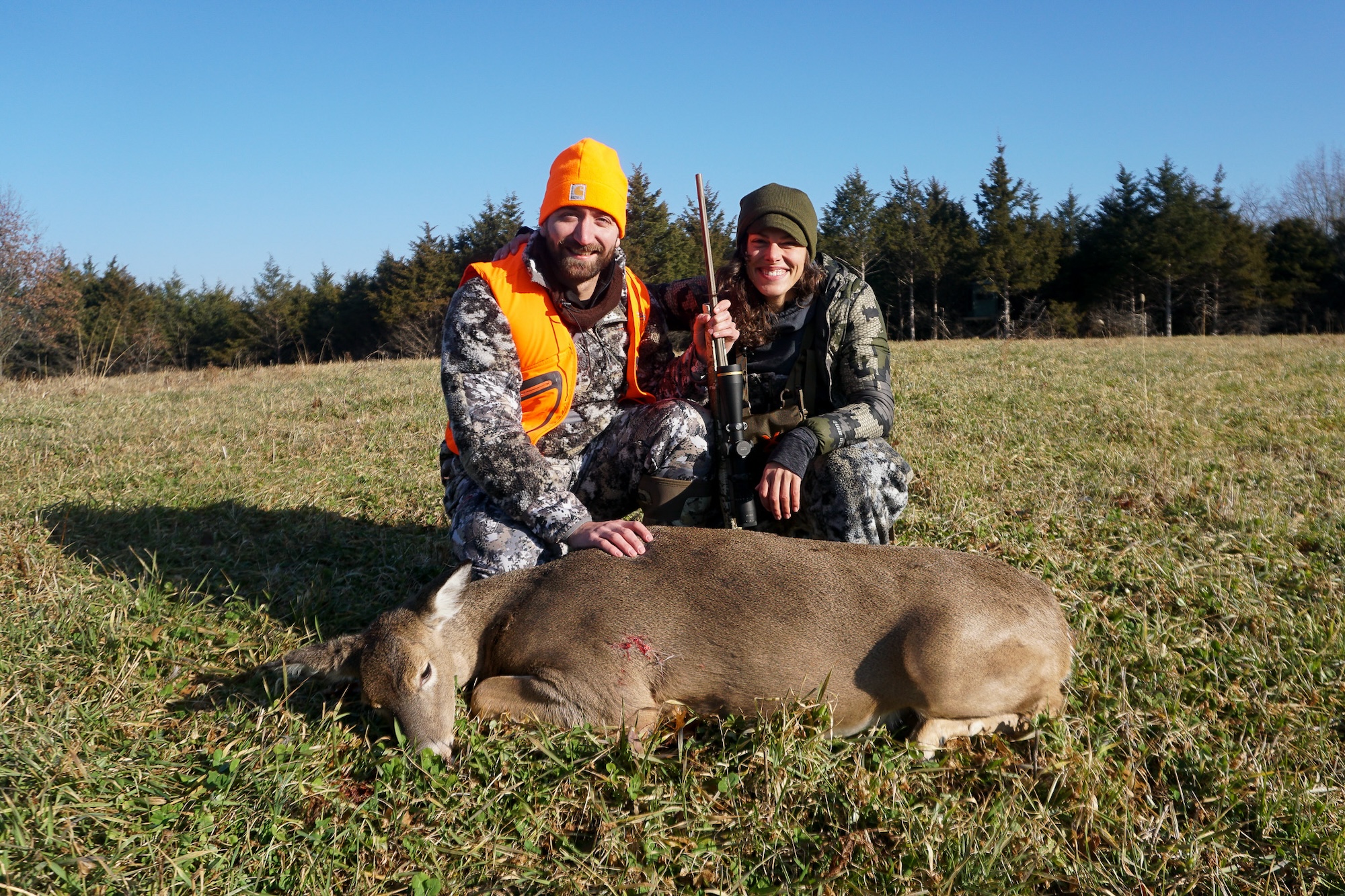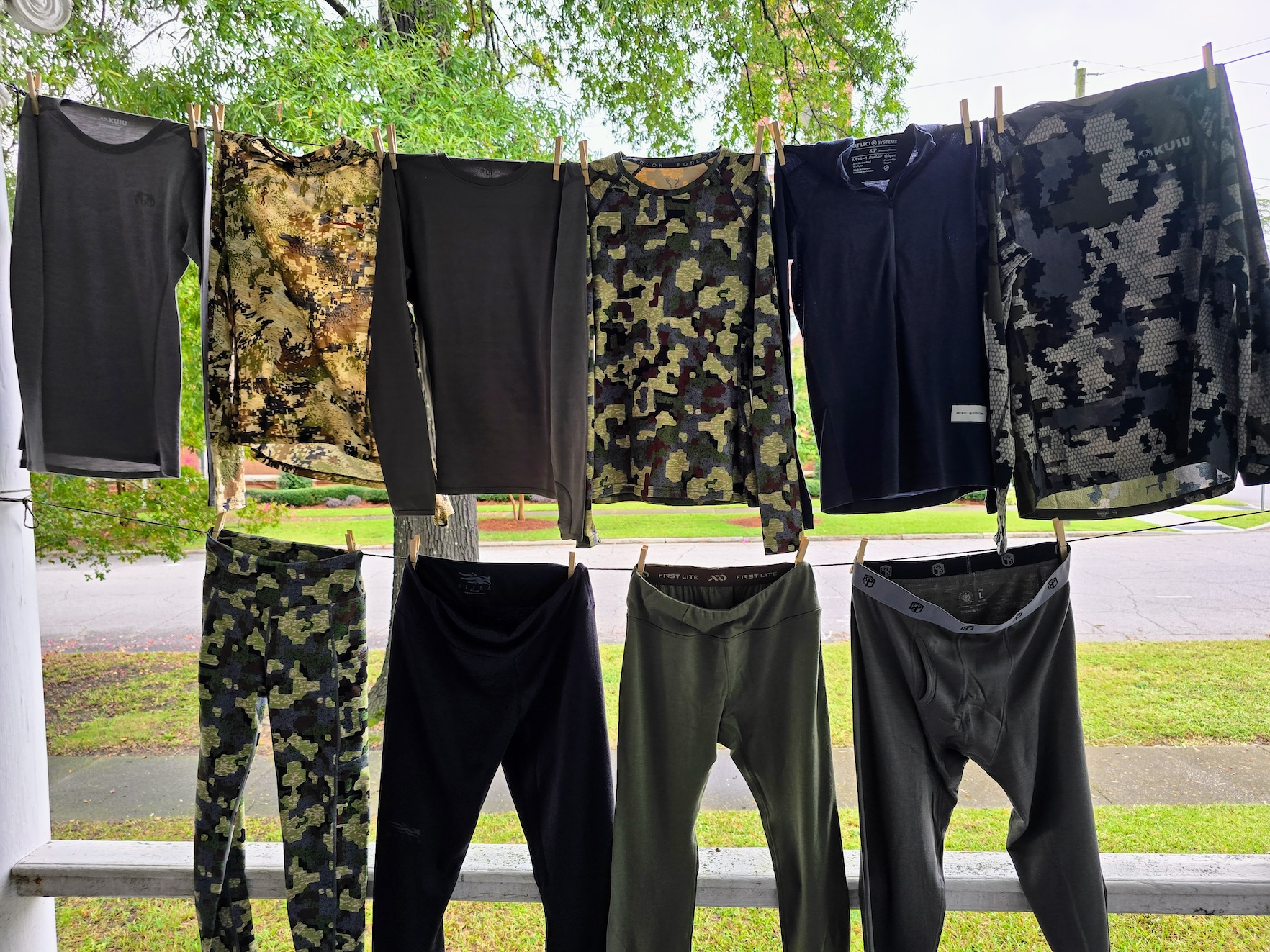How to Insult Your Western Hunting Guide
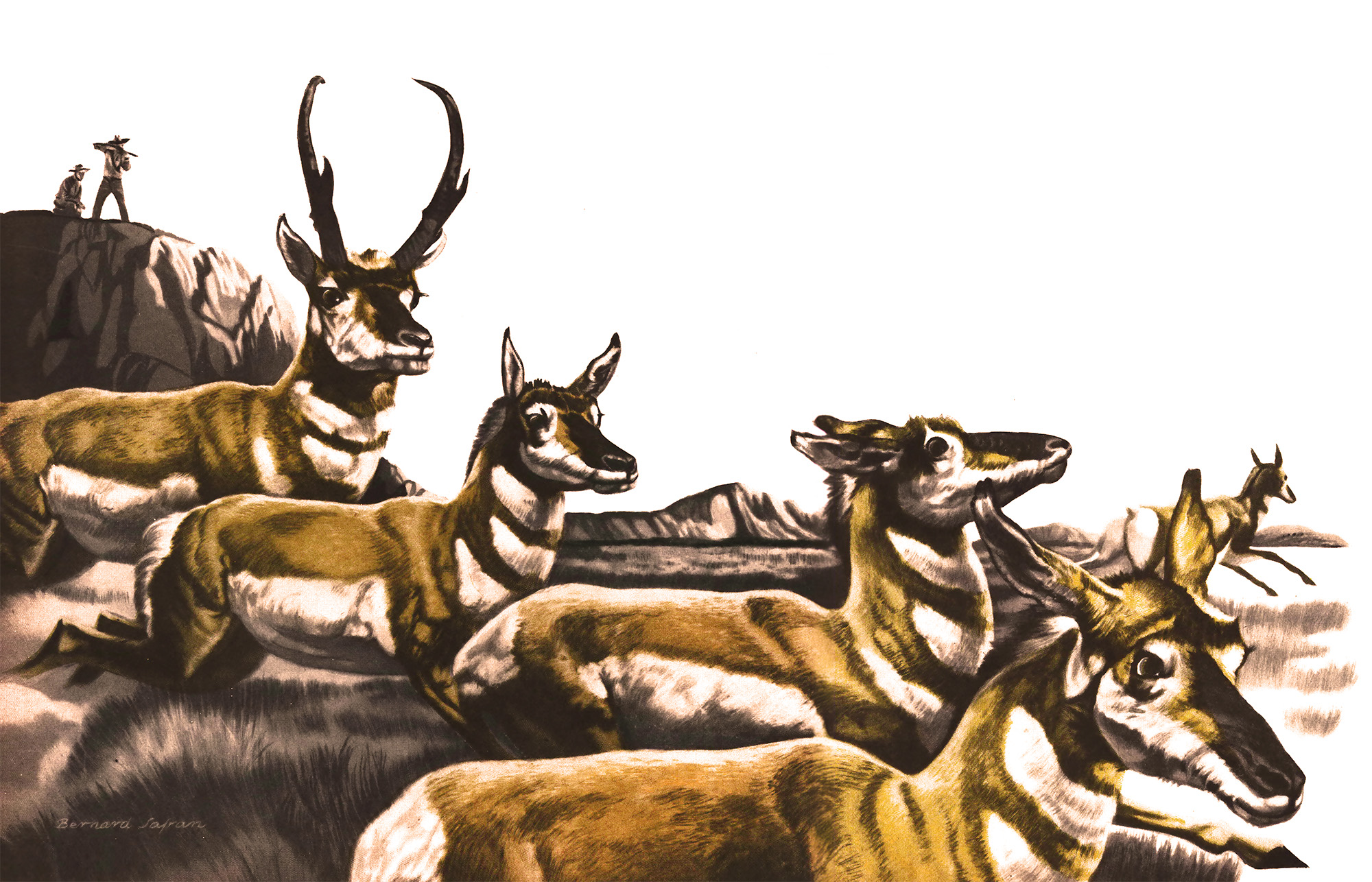
“There’s one reason, mister,” the Georgia sheriff said stoutly, “why I don’t like your Wyoming country.”
Max Wilde bristled like a stallion in a brush corral. “And what’s that?” he barked.
“Everything’s too easy. You get on a horse, ride for a day, camp, walk out to the edge of a grassy park, and bang! You’ve got an elk. Or you sit for a couple of afternoons over a rotten carcass of some kind until a grizzly walks out of the shadows. You put your sights on his neck and squeeze off the trigger. Blooie! He folds. These buck deer tiptoe right up to you and chew the buttons off your coat. Antelope? I’d just as soon shoot a yearling calf in the feed lot.”
I glanced at Max. His mouth was twisted into an ominous angle. “It ain’t as exciting as a quail hunt clown in Georgia, is it?” he asked mildly.
“Not by a damsite!” Sheriff Henry Mosely said flatly.
I could almost read Max Wilde’s mind. He knew, of course, that the ease with which a dude took his game hinged on a guide’s efficiency, knowledge of the country, and familiarity with the game being hunted.
“I reckon.” Max said, “you’d like more excitement with your shooting.”
“That’s about the size of it,” Henry agreed.
The old frontiersman grinned, but the glint in his eyes warned me. From past experience with this grizzled veteran of the high country, I had a fleeting impression that we were in for a rugged day — and a faint suspicion that, when it was over, the sheriff would no longer claim shooting an antelope was like climbing a coral fence and ending the misery of an old plug horse.
We turned off the highway a few miles south of Cody, Wyoming, rattled over a cattle guard, skirted the edge of a rolling mountain, and wound up a series of switchbacks into the high country beyond the foothills that flanked the road. This 8,000-foot mesa lay in the lap of a higher mountain which might have been hacked out of the massive earth with a dull ax. The high, thin air made the peak seem close enough to hit with a rock. Actually, it was twenty miles away and some 4.000 feet above us.
My first shot cut the grass an inch over the line of the buck’s back. The band went from a dead run into a scared flight that flattened them out against the sun-baked earth. So I led the buck like I was shooting mallards back on a Southern marsh.
The top of the mesa appeared flat — but so do the teeth of a crosscut saw when your eye is on a level with their tips. The plateau was sliced into a series of benches from 1,000 yards to a mile wide and gashed by parallel canyons half a mile deep. I sized it up as a dreary wasteland, choked with mangy grass and sagebrush and carpeted with rust-colored rocks ranging from the size of my watch to that of a ten-gallon hat, and rimmed by mountain walls rising like purple welts against the sky.
I was amazed to find that life on these sagebrush flats was remarkably abundant. Almost continuously we flushed jackrabbits, sage hens, and a variety of smaller birds and animals.
As we drove along, I tried to recall what I had read about the antelope, the animal of the plains. I remembered that he is not only the fleetest game animal in North America, but has the visual range of a telescope. This was verified almost immediately when we stopped for a look around. I found a white-and-tan herd that was barely visible through my 8X glasses. What amazed me was that they had already spotted us and were standing with their heads up, staring in our direction.
“By the time you saw them,” Max chuckled. “they had already figured the caliber of your rifle. counted the buttons on your jacket. and picked out a route to lead you on the kind of chase that separates the men from the boys.”
“Then let’s start chasing,” I suggested.
Max wagged his stubbled chin. “There’s not a decent head in the bunch.”
“A decent head?” Henry asked.
“Fourteen inches and up,” the guide said. “The record is around twenty inches. I believe, but we’re not likely to see one that big.”
Another Western guide had once told me that the pronghorn is saturated with curiosity, and that any hunter could get a buck within range by lying down out of sight and waving a red flag back and forth within view of an antelope band. I asked Max if this were true.
“Depends on the individual animal,” he said. “Some of the critters are curious. I reckon some are not. If you want to kill one that way, you’d better pack along enough lunch to feed you for a spell.”
Gabby Barrus met us with the horses. Gabby was a sports announcer over the local radio station, but his first devotion was to hunting. He had forsaken his microphone for the day to ride with us on the mesa.
It was cold. And in this high country the wind blew constantly. It stung my face like the blasts I had once met off the polar icecap. With chilled hands, I slid my rifle into the saddle scabbard and threw a leg over the leather. Max was already in his saddle, watching the sheriff with a twinkle in his gray eyes.
“We can hunt these critters two ways,” Max said. “We can locate a bunch and get close enough for a long stalk on foot, or we can herd them hell-for-leather off one of these benches.”
“Let’s try it hell-for-leather,” Henry suggested.
“Look,” I broke in, “give the sheriff all the rough stuff he wants. I’ll take mine the orthodox way.”
The sheriff finished his stirrup adjustments and we followed Max at a fast walk through the sage and along the rim of a canyon. At the head of the mesa, where it broke abruptly into a ragged, rocky point, we flushed a herd of six antelope. They ran for a startled moment, then stopped to look back. Five were does, with nervous legs and huge ears alerted toward us. The sixth was a buck with sweeping horns that branched above his eyes and curved back on slender tips. Max studied them for a moment through his glasses.
“Let him go,” he decided. “His head is shaped O.K., but his horns are not heavy 0r long enough and his muzzle lacks a hell of a lot of being dark. You want to look for all of that in a good trophy.”
While we watched, one of the does bounced off the rim toward the valley. After a moment the others followed her. They reappeared on the next rolling hump and looked back at us for a long minute before they went out of sight into another hidden canyon.
We hunted out two wide benches, then turned cross-country for more than an hour’s ride to a deep gulch streaked with a tiny stream, clear as glass. The bottom of the canyon was heaped with the gold of quaking aspen leaves, beautifully contrasted with the ragged brown mesa.
I was adjusting my glasses when Max said quietly, “Right there — under the crooked pine.”
I screwed my binoculars into focus and swept the slope beyond the creek. The antelope were bunched on a narrow bench that angled away from a stunted pine tree under the rim. I was experienced enough to pick out the buck from that distance, but I couldn’t estimate the size of his horns. The top of his muzzle was black.
Leaving Gabby and the sheriff where the band of pronghorns could keep an eye on them, Max and I rode back into the sagebrush, out of sight. We made an unhurried circle of almost two miles before we turned down a dry gulch, crossed the clear creek twisting through the aspens, and climbed into the high country on the other side. With plenty of ground between us and the antelope band, we rode to within 200 yards of the rim and dismounted. In a half crawl, we slipped to the brink of the canyon. On his belly, Max aimed his binoculars at our companions back on the high rim.
“They’re still watching in this direction,” Max whispered, “so the herd must be about where we saw it. Get ready for some fast action.”
I slid my own glasses back into the case and checked the breech of my gun.
“Stand up throwing lead,” the guide said.
We popped over the rim against the skyline and the pronghorns bolted like a crew of moonshiners in one of the sheriff’s surprise raids. My first shot cut the grass an inch over the line of the buck’s back. The band went from a dead run into a scared flight that flattened them out against the sun-baked earth. So I led the buck like I was shooting mallards back on a Southern marsh and my second slug caught him behind the shoulder, bouncing him end over end into the grass with such force that I was sure he’d break off one of those long, black horns.
“Lousy first shot,” Max commented dryly, “good second.”
Gabby and the sheriff rode over to where we were dressing out the pronghorn. The sheriff dismounted.
“Just like I said,” he grunted. “That had all the excitement of knocking over the fatted calf in his barn stall.”
“Your trophy,” Max said, “might not come this easy.”
I wondered then what he meant. I couldn’t guess, but I soon learned. The remainder of that day will stand out in my memory as one of the wildest hunts I ever endured. We must have covered thi1ty miles on horseback, part of it flying over rock-studded ground. Any stumble or misstep into a chuck hole could have crippled both horse and rider. But Max knew his horses as well as his dudes, and he had elected to show the sheriff how to beat an antelope at his own game.
He gave his horse the spurs and the animal plunged ahead in a furious gallop. The other horses tore after him and I found myself hanging to my roan as if all the money at Churchill Downs was riding on the race.
The next band we spotted was on a long hill at the foot of a bench. Quick eyes had already looked us over and decided that our intentions were dishonorable. We got but a brief glimpse of the herd before it trotted out of sight beyond the slope. I’m not certain, but I think Max winked at me.
“There’s a good head in that bunch,” he said.
He gave his horse the spurs and the animal plunged ahead in a furious gallop. The other horses tore after him and I found myself hanging to my roan as if all the money at Churchill Downs was riding on the race. I got the swing of the saddle and glanced at Henry. The sheriff was a good rider, but the horses on his Georgia farm were all gaited animals. This bronc was really dusting his pants. I know, because I was taking a beating, too.
From long experience, Max outguessed the little band of antelope. They raced for half a mile around the foot of the mountain, then cut up one of the steep draws to the rim of the mesa where we were stirring the alkali into a smoking fog. They topped the rise less than a hundred yards away.
The pronghorns were bounding along like schoolboys on pogo sticks. Then they saw us. The next instant they were covering ground like they had been shot collectively out of a bazooka. It doesn’t matter how fast the experts claim an antelope can run — I think they underestimate him. Those critters were tan-and-white jets, flying low with a tail wind, leaving a wash of dust behind them like vapor trail.
Max yanked up his horse with a shower of rocks and sagebrush and hit the ground on a dead run.”There’s your buck, Henry,” he yelled. “Take him!”
The sheriff thudded to earth. tugging at his .348. By the time he had wrestled it from the saddle scabbard, the antelope were 300 yards away, stretched out like fleeting ghosts. They were aimed for the far rim of the next bench, the buck running behind. Henry’s slug hit three feet behind the buck, kicking up dirt, and the pronghorn closed with his band in a new spurt of speed. The sheriff pumped another shell into his cannon but Max yelled, “Hold it! You might hit a doe.”
We watched the herd out of sight over the rim. Max grinned at Gabby and me. “The very next time I hold up a bank,” he said, “I’m going to pick ‘one in Henry’s county, back in Georgia.”
The sheriff grimaced.
The next herd we found was grazing on top of a high double-peaked promontory that jutted 1,000 feet above the level of the mesa. Max studied the buck through his glasses. It was a. good head. We ducked out of sight under a sidehill and picked our way slowly through the giant cobblestones. climbing all the while toward the saddle between the peaks, where we would be within range. But the herd had seen and outguessed us. When we topped the saddle, they were on the next point, half a mile away.
We pulled our horses to a stop and traded curiosity with the pronghorns for a long- five minutes. Then, in a dignified saunter, they clipped over the rim.
“Now!” Max yelled.
Once more I was hanging on, tearing over rocks that would have thrown and dismembered an ordinary horse. But the maneuver completely fooled the antelope. When we raced to the edge, they were standing less than 200 yards away, looking nervously over their shoulders.
Even with the experience gained on his first attempt at riding into a herd, the sheriff was still too slow. By the time he had rolled off his horse and pulled his gun free, the antelope band was kicking dust.
The sheriff’s first shot was high. We could see where it powdered the gravel slide beyond the flying herd. His next slug was low and his third raised a plume of gray a foot behind the buck. The gleam in the guide’s eyes was brittle enough to break.
”I’d like to know,” he said, “which’ll wear out first — us, the horses, or the rifling in that gun.”
I didn’t know it then, but the riding we had done up to that moment was just a canter through the park. Now it got rough. We tore along the rims of immense canyons, plowing to slops like a Western movie posse; we threw lead at bands of antelope that flew like someone had given them the turpentine treatment. I don’t know how many bucks the sheriff missed, but after each salvo his face grew a little redder. He began to talk to himself. I don’t think he’ll realize until he reads this that Max Wilde was having the time of his life, or that hitting those fleeting ghosts was like trying to shoot skeet with a .22.
The sheriff was an old hand now. He boiled out of the saddle, pulling his gun as he went. He seated his shell in the chamber and swung on the running buck. He held his fire so long that I got a little panicky, thinking he had frozen at the controls.
But he redeemed himself at last. His killing shot late in the afternoon, was a combination of the prettiest bit of strategy and the finest shooting I ever saw. The guide had spotted a heavy-horned buck standing on a rocky knoll. The pronghorn had a commanding view of the bench and the canyons flanking it. There simply was no way to stalk unseen, so we rode straight toward him, casually as cowhands might have done. For more than ten minutes he watched our unhurried approach, then stepped off the top of the knoll, toward where the mesa ended in a needle point and dropped into the river basin beyond.
“The way the country lies,” Max predicted, “he won’t go that way. He’ll try to work around and get behind us.”
Abruptly he changed directions, turning to the left of the little hill. After a few minutes the buck came into sight again, trotting parallel to the course Max had chosen. We hardly glanced in his direction but continued in a fast walk. The buck turned straight away again and went into a little draw, but Max changed neither pace nor direction. After three minutes the pronghorn appeared, this time herding sixteen does and a smaller buck in front. The band trotted for 100 yards, then ducked out of sight into a shallow ravine.
“Hit the trail,” Max sang, clamping the spurs to his horse.
For the first time I saw what he was trying to do. The band of antelope was determined to get in front of us and he was trying to head them off. They came out of the draw, now running close to the ground· in a long· arc that would easily put them past us.
With half as far to run, we gained rapidly on the fleeting band, even with tired horses, and the brown-and-white streaks were less than 100 yards away when Max slid to a stop yelling, “Take him, Henry!”
The sheriff was an old hand now. He boiled out of the saddle, pulling his gun as he went. He seated his shell in the chamber and swung on the running buck. He held his fire so long that I got a little panicky, thinking he had frozen at the controls. I was so tight that I jumped when the rifle barked. The flying buck went end over end, sprawled in the sage, made a feeble attempt to rise and went down again, shot behind the heart. For a moment the sheriff looked as though he did not believe it himself, then he whooped and threw his hat into the air. Mine went with it. Max just grinned.
“That was an honest shot, anyway,” he said. “No fancy stuff, but Henry —”
The sheriff jammed on his hat and threw out the empty hull. “Yeah?”
“When you hunt these critters the way they should be hunted,” the gray-eyed guide said, “it ain’t like pulling the cork on a barrel of mash.”
This story, “The Sheriff’s Pronghorn,” first appeared in the April 1953 issue of Outdoor Life.
Read the full article here



